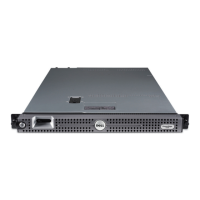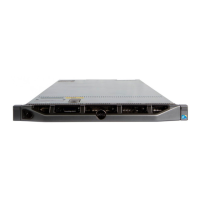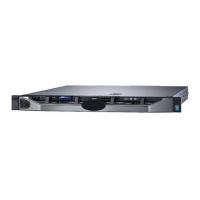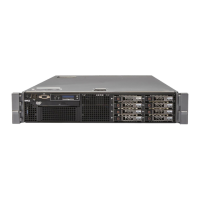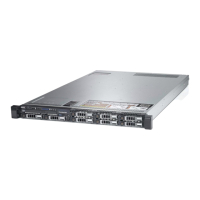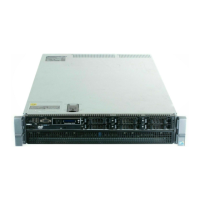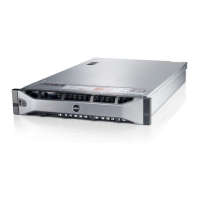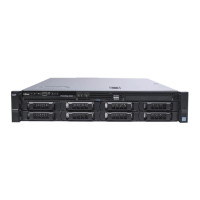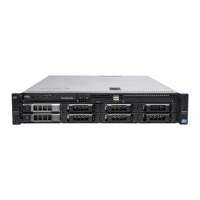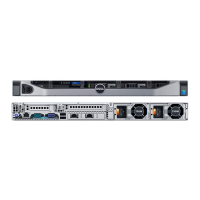WARNING: The heat sink is hot to touch for some time after the system has been powered down. Ensure
that you do not touch the heat sink while removing the system board.
g) heat sink and processor
h) internal dual SD module
NOTE: It is recommended that you remove the power distribution board before removing the system board
from the chassis.
5. Disconnect all other cables from the system board.
CAUTION: Take care not to damage the system identification button while removing the system board from
the chassis.
6. Remove the nine screws on the system board and slide the system board toward the front of the system.
7. Hold the system board by its edges and lift the system board out of the chassis.
CAUTION: Do not lift the system board assembly by grasping a memory module, processor, or other
components.
Figure 61. Removing and Installing the System Board
1. screws (9)
2. system board
Installing The System Board
CAUTION: Many repairs may only be done by a certified service technician. You should only perform
troubleshooting and simple repairs as authorized in your product documentation, or as directed by the online or
telephone service and support team. Damage due to servicing that is not authorized by Dell is not covered by your
warranty. Read and follow the safety instructions that came with the product.
1. Unpack the new system board assembly.
CAUTION: Do not lift the system board assembly by grasping a memory module, processor, or other
components.
101
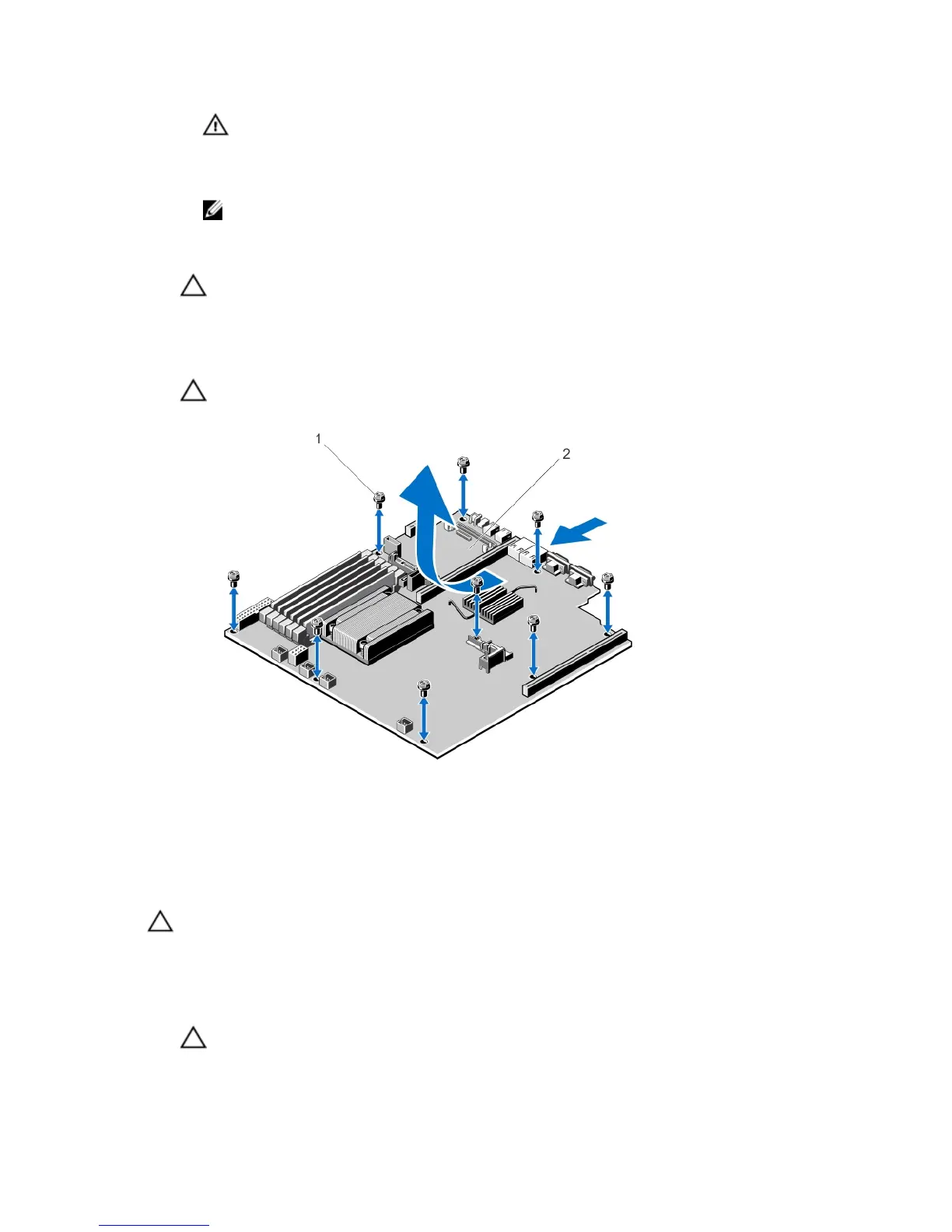